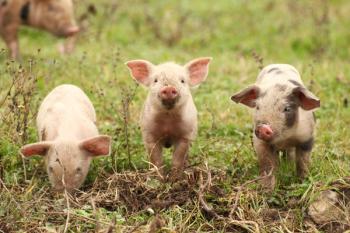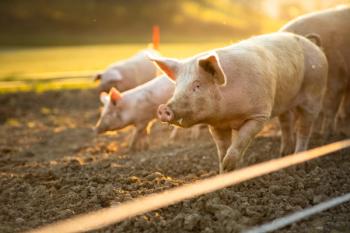Article Highlights
- Pharmaceutical, agriculture, and food and beverage industries are interconnected through their shared use of NIR spectroscopy.
- NIR spectroscopy operates by analyzing molecular bonds using NIR light, providing valuable information about chemical composition and physical properties of materials.
- NIR spectroscopy offers non-destructive analysis, making it suitable for real-time measurements, benefiting industries like pharmaceuticals in rapidly identifying and quantifying ingredients and impurities.
- In agriculture and food industries, NIR spectroscopy aids in soil analysis, crop monitoring, quality assessment of agricultural products, and ensuring food product quality and authenticity.
Although it may seem like the pharmaceutical, agriculture, and food and beverage industries concentrate on the production of different products, they are all intertwined in various ways. One aspect to all three industries that keeps them connected to one another is that they all benefit from the use of the same analytical technique, near-infrared (NIR) spectroscopy.
NIR spectroscopy has emerged as a very versatile analytical technique. With its broad applications in the pharmaceutical, agriculture, and food and beverage industries, the capabilities of this technique in analyzing the properties and composition of materials continue to expand. NIR spectroscopy operates by using the NIR region of the electromagnetic spectrum, which ranges from approximately 780 to 2500 nanometers in wavelength (1). This spectral region lies between the visible and mid-infrared regions (1).
When NIR light is passed through or reflected off a sample, it interacts with the molecular bonds present in the material. Different molecules absorb light at different NIR wavelengths because of their unique vibrational (stretching, bending, and combination band) energies. By measuring the intensity of light absorbed, reflected, or transmitted at various wavelengths, NIR spectroscopy can provide valuable information about the chemical composition, molecular structure, and physical properties of a sample (1).
One of the key advantages of NIR spectroscopy is its non-destructive and non-invasive nature. It allows for the analysis of samples without the need for extensive sample preparation, making it suitable for real-time and in situ measurements (1).
In the pharmaceutical industry, NIR spectroscopy is often used to rapidly identify and quantify active pharmaceutical ingredients (APIs), excipients, and impurities in drugs and pharmaceutical formulations. As an example, a recent study demonstrated NIR spectroscopy’s effectiveness in this space by characterizing ecstasy (2).
In the agriculture industry, NIR spectroscopy is used for soil analysis, crop monitoring, and quality assessment of agricultural products. By analyzing the NIR spectra of soil samples, researchers can determine soil properties such as nutrient content, organic matter content, and moisture levels, aiding in soil fertility management and precision agriculture practices. In this space, we have seen how NIR spectroscopy could be enhanced using visible-NIR spectroscopy and principal component analysis (PCA) to analyze organic matter in soil (3–5).
In the food and beverage industry, NIR spectroscopy is employed for quality assurance, process optimization, and authenticity testing. It enables rapid analysis of food products for parameters such as moisture content, fat content, protein content, sugar content, and food adulteration. In one recent study, for example, Fourier transform near infrared (FT-NIR) spectroscopy coupled with chemometric techniques to predict nutritional parameters and identify cookie types and cereal composition in a batch of 120 commercially acquired samples (6). The study demonstrates the effectiveness of FT-NIR spectroscopy is a fast, reliable, and non-destructive alternative to traditional analytical methods for ensuring the quality and safety of cookies and other food products (6).
Overall, NIR spectroscopy offers a versatile and powerful analytical tool for a wide range of applications. Ongoing advancements in instrumentation, data analysis techniques, and applications continue to expand the capabilities and utility of NIR across the pharmaceutical, agricultural, food and beverage, and other industries (7).
References
(1) Malvern Panalytical, Near-infrared (NIR) Spectroscopy. Available at: https://www.malvernpanalytical.com/en/products/technology/spectroscopy/near-infrared-spectroscopy#:~:text=NIR%20spectroscopy%20is%20a%20method,properties%20without%20altering%20the%20sample. (accessed 2024-04-03).
(2) Cavalcante, J. A.; Souza, J. C.; Rohwedder, J. J. R.; Maldaner, A. O.; Pasquini, C.; Hespanhol, M. C. A Compact Fourier-Transform Near-Infrared Spectrophotometer and Chemometrics for Characterizing a Comprehensive Set of Seized Ecstasy Samples. Spectrochim. Acta Part A: Mol. Biomol. Spectrosc. 2024, 314, 124163. DOI: 10.1016/j.saa.2024.124163
(3) He, S.; Zhou, Q.; Wang, F.; et al. Soil Organic Matter Estimation Modeling Using Fractal Feature of Soil for vis-NIR Hyperspectral Imaging. Spectroscopy Supplements 2023, 38 (s11), 40–47. DOI: 10.56530/spectroscopy.fz7077a2
(4) Wetzel, W. Monitoring Soil Quality Using MIR and NIR Spectral Models: An Interview with Felipe Bachion de Santana. Available at: https://www.spectroscopyonline.com/view/monitoring-soil-quality-using-mir-and-nir-spectral-models-an-interview-with-felipe-bachion-de-santana (accessed 2024-04-03)
(5) Acosta, M.; Rodriguez-Carretero, I.; Blasco, J.; de Paz, J. M.; Quiñones, A. Non-Destructive Appraisal of Macro- and Micronutrients in Persimmon Leaves Using Vis/NIR Hyperspectral Imaging. Agriculture 2023, 13 (4), 916. DOI: 10.3390/agriculture13040916
(6) Quintelas, C.; Rodriguez, C.; Sousa, C.; et al. Cookie Composition Analysis by Fourier Transform Near Infrared Spectroscopy Coupled to Chemometric Analysis. Food Chem. 2024, 435, 137607. DOI: 10.1016/j.foodchem.2023.137607
(7) Ciurczak, E. W.; Igne, B.; Workman Jr, J.; Burns, D. A. eds. Handbook of Near-infrared Analysis; CRC press, 2021. DOI: 10.1201/b22513





